12th ASEAN-Australia-New Zealand (AANZ) Dialogue
12th ASEAN-Australia-New Zealand (AANZ) Dialogue
22-24 September 2019
Kuala Lumpur, Malaysia

Participants of the 12th AANZ Dialogue.
a. An Overview
The 12th ASEAN-Australia-New Zealand (AANZ) Dialogue was convened at the Pavilion Hotel, Kuala Lumpur from 22 to 24 September 2019. This year’s AANZ Dialogue focused on the US-China strategic competition, regional trade mechanisms, Preventing/Countering Violent Extremism (P/CVE), environmental challenges, perspectives on ASEAN-centred regional mechanisms/architectures, and the opportunities/challenges for ASEAN-Australia-New Zealand trilateral relations.
The 6 sessions convened were titled:
- Regional perspectives on managing the US-China strategic competition
- Moving forward with regional trade mechanisms
- The challenge of preventing and countering violent extremism on social media
- The challenge of managing the environment in a developing Southeast Asia
- Evaluating regional architectures and mechanisms
Perspectives on ASEAN-Australia-New Zealand cooperation and challenges
The Dialogue saw strong attendance by participants from various backgrounds, including government officials, academicians, journalists and analysts, among others. A total of 66 participants attended the one-and-a-half-day Dialogue.

From left: Prof Aileen SP Baviera, Mr Simon Draper, Ms Penny Burtt and Tan Sri Rastam Mohd Isa.
b. Executive Summary
Key takeaways from Discussions during the Dialogue
- All parties – ASEAN, Australia and New Zealand can learn a lot from each other on engagements with China and the United States, and the issues that drive decision-making in these major powers.
- Participation from the ASEAN Secretariat’s Political Security Department was very valuable to the discussions – especially on ASEAN’s role managing major power relations and in ASEAN centred multilateral mechanisms.
- A greater understanding of how ASEAN, its institutions and Member States operate, especially in areas where there are limitations, were invaluable to stakeholders from Australia and New Zealand.
- ASEAN, Australia and New Zealand, need to move beyond trade cooperation to address political-security and socio-cultural issues – the latter might yield more low-hanging fruits.
Issues and ideas moving forward
- The need to identify suitable role-players, both moderators and discussants that are capable of presenting and engaging in an interactive manner.
- The inclusion of more Southeast Asian participants:
- It was correctly pointed out that the bulk of Dialogue participants were from Malaysia, Australia and New Zealand.
- The challenge for ISIS Malaysia as the Southeast Asian convener was to work within the available budget to pay for the cost of the vendors (venue, accommodation, transport, F&B) and to pay for the return flights of Southeast Asian participants. In the 12th Dialogue, around 43 percent of the budget was allocated to flights and transfers for participants or role-players.
- Additionally, as this Dialogue is organised on behalf of the ASEAN-ISIS Network, ISIS Malaysia must balance the need to ensure sufficient representation from the Network with the imperative of getting quality participants from outside the Network.
- Ultimately, more funding is required to ensure that more quality Southeast Asian participants are included in future dialogues.
Potential topics for the next Dialogue
- A focus on water security and management, including river management in Southeast Asia. This will allow the issues of the Mekong Region to be discussed as well – which is a major concern for Myanmar, Laos, Cambodia, Vietnam and Thailand.
- A session that focuses on the alignment (or misalignment) on how business views the trade dynamics in this region. The Australia-ASEAN Business Council, AustCham ASEAN, ASEAN New Zealand Business Council and ASEAN Business Advisory Council can be tapped on for expertise. This could also lead to exploratory conversations on a new source of sponsorship from these sectors.
c. Summary of the Sessions
Session 1: Regional Perspectives on Managing the US-China Strategic Competition
Moderator: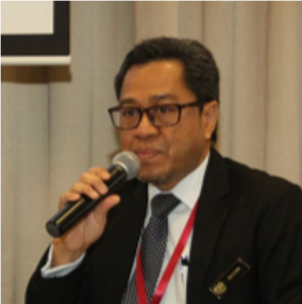 Dato’ Ahmad Rozian Abd Ghani
Dato’ Ahmad Rozian Abd Ghani
Director-General
ASEAN-Malaysia National Secretariat
Ministry of Foreign Affairs
Malaysia
Discussants:
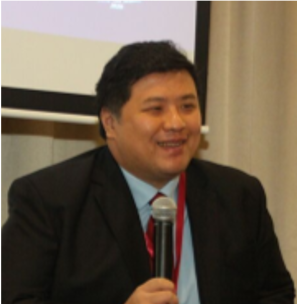
Dr Yohanes Sulaiman
Senior Lecturer
School of Government
Universitas Jendral Achmad Yani
Indonesia
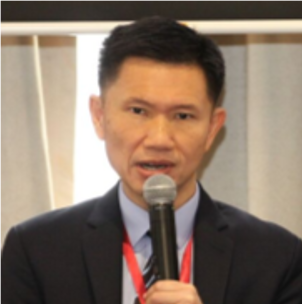
Dr Thitinan Pongsudhirak
Director
Institute for Security and International Studies (ISIS)
Thailand
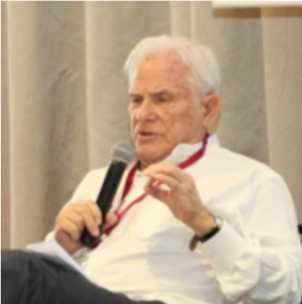
Ambassador John McCarthy
Former Australian Ambassador to the United States, Japan,
Indonesia, Vietnam and Mexico;
Former High Commissioner to India
Australia

Mr Simon Draper
Executive Director
Asia New Zealand Foundation (ANZF)
New Zealand
This session explored the varying perspectives surrounding the competitive dynamics in Sino-American relations, with reference to the discourse surrounding the Indo-Pacific concept and the release of the ASEAN Outlook on the Indo-Pacific. It discussed ways for the ASEAN Member States and its Dialogue partners to navigate these geopolitical changes and manage the respective relationships with both powers and between themselves.
There was a general consensus that for the foreseeable future Sino-American relations will remain adversarial. Panellists noted that U.S. and China, under their current leadership, where increasingly driven by divergent agendas. The U.S. was focused on maintaining pre-eminence, while China—now the second largest economy in the world —was seeking to expand its political and strategic influence commensurate with its size and historic power. The competition between the two was re-shaping the geo-strategic outlook for the region, as well as the global economy. Compared to the Soviet-American competition of the Cold War, the unfolding situation appears to mark the end of linearity in Sino-American relations.
The second area of discussion was the general concept of the Indo-Pacific, the impact of ASEAN’s new Outlook on the Indo-Pacific and how it may influence the wider regional discourse. Some argued that the Outlook had few tangible prescriptions, but was largely an effort to address ASEAN’s own anxieties about its own continued centrality in regional architecture and adaptability to broader geopolitical shifts. The Outlook was seen by some as a belated, forced response to the Free and Open Indo-Pacific construct. Others, however, argued that the nomenclature of the various terms and initiatives should not dominate the discussion, but the reality and facts of the situation needs to take precedence. The “Indo-Pacific” as an organising principle in international affairs had been a reality, irrespective of the label, for some time.
On best practices in response to these competitive dynamics, it was argued that options are limited. It was clear most countries in the Indo-Pacific did not want to be forced to choose between China and the U.S. It was challenging in some cases for ASEAN Member States to respond to Chinese pressure given the asymmetry in size and power. While the region was concerned about China’s strategic intentions, many individual economies—including Australia and New Zealand—were deeply entwined with China’s and had benefited significantly from China’s rising prosperity. Further factors such as the focus of western governments and companies on issues such as human rights, labour and environmental standards in economic cooperation; had made China seem like an easier alternative as an economic partner. All panellists concurred that “exit strategies” should not be the frame of reference. Rather, we should look towards capitalising on and expanding existing regional cooperation mechanisms, deepening coordination on policy issues between middle powers and improving bilateral relations.
Session 2: Moving Forward with Regional Trade Mechanisms
Moderator:
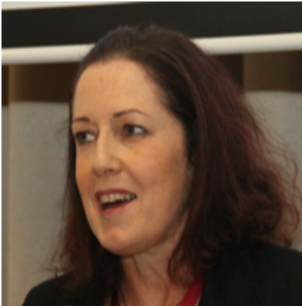
Dr Tracey Epps
Trade Law Consultant
Chapman Tripp
New Zealand
Discussants:
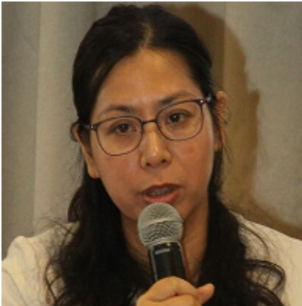
Dr To Minh Thu
Deputy Director-General
Institute for Foreign Policy and Strategic Studies
Diplomatic Academy of Vietnam (DAV)
Vietnam
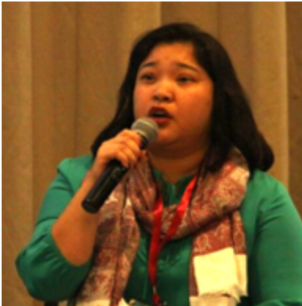
Dr Juita Mohamad
Fellow
Economics, Trade and Regional Integration
Institute of Strategic and International Studies (ISIS)
Malaysia

Professor Gordon Flake
Chief Executive Officer
Perth US Asia Centre
University of Western Australia
Australia
This session explored the opportunities and threats to ongoing regional trade agreements/mechanisms (RTAs) at a time of major power trade tensions, and examined the prospects for the ongoing Regional Comprehensive Economic Partnership (RCEP) negotiations.
Given the current trends in the global economy—declining demand and a shift towards protectionism—panellists suggested that stakeholders must work to consolidate RTAs. This includes further facilitating free trade reforms, reskilling and upskilling labour, and addressing emerging environmental concerns. On the U.S.-China trade war, one of the panellists was of the view that it would not undermine ongoing ASEAN-centred regional economic integration efforts such as RCEP or other bilateral mechanisms being negotiated.
RCEP negotiations continue to see slow yet predictable progress – 26 rounds over 7 years. While all parties have key interests to protect, there are indications that China and some in ASEAN are increasingly impatient with India’s intransigence. Those negotiating the agreement will have to balance between a desire for a quick conclusion or having a final product that is more ambitious and not an unhelpfully diluted version of the TPP/CPTPP. There are also questions of expectations of different stakeholders to address – RCEP as it stands might be enough for some, but not for all. This had undoubtedly affected the negotiating process.
Another panellist drew parallels between the general deterioration of the strategic-security-centric global rules based order and similar trends/challenges in the realm of international trade. The US-China trade war could lead to longstanding damage to regional/global institutions. On RCEP, some participants stated that an RCEP without India—an option which was now being openly discussed—or Australia and New Zealand would defeat the purpose of the deal and might render the entire process irrelevant.
On a more optimistic note, one panellist concluded by arguing that while the withdrawal of the U.S. from the TPP was damaging, the emergence of the CP-TPP had been a positive development. Its appeal still stands, with Indonesia, Thailand and South Korea showing significant interest in joining the CP-TPP in the future. Some have not ruled out the prospect that the U.S. may still join at a later date.
Session 3: The Challenge of Preventing and Countering Violent Extremism on Social Media
Moderator:

Mr Ben Bland
Research Fellow and Director of the Southeast Asia Project
Lowy Institute
Australia
Discussants:
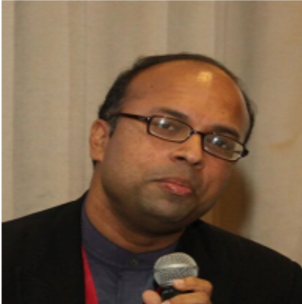
Mr Thomas Koruth Samuel
Regional Consultant
Terrorism Prevention
United Nations Office on Drugs and Crime (UNODC)
Malaysia

Mr Joseph Franco
Research Fellow
Centre of Excellence for National Security (CENS)
S. Rajaratnam School of International Studies (RSIS)
Singapore

Mr Cameron Sumpter
Research Fellow
Centre of Excellence for National Security (CENS)
S. Rajaratnam School of International Studies (RSIS)
Singapore
The session discussed the role of social media in both the spread of extremist narratives and as a tool for responding to new and emerging threats. In light of the Christchurch attacks in March 2019, questions were raised regarding the broader discussions of terrorism and extremism in the post-Daesh world. Options for regulators and policymakers for working with technology practitioners and vendors to address extremist use of the internet and social media were explored.
First, discussants deliberated on the lack of a widely accepted definition of violent extremism. They also agreed that the subject matter’s politically-charged nature have not made efforts to reach a clear, agreed understanding of the concept easy. The difficulty of determining when and how extremist beliefs can transition from thoughts into violent action, and when intervention is necessary, was discussed. Other challenges identified included distinguishing between violent and non-violent extremism, how much focus should be on the intentional harming of non-combatants and exacting political change. One panellist reminded the Dialogue that terrorism is a tactic, not an ideology.
Second, discussants covered the roles and capabilities of technology and the internet in the current context. The internet and social media play a key role as an enabler for extremist ideology, namely through the ability to transcend physical boundaries. References were made to the Christchurch Call to Action, which sought to identify and remove extremist content from the internet and to coordinate and share best practices. There was also a discussion on the level of involvement that tech companies and social media platforms themselves should have in regulating content on the internet, with particular reference to the diversity in degree that extremist groups use social media and the varying jurisdictions and online policies of any given country.
The panel explored the potential courses of action for the future of handling extremist content on social media and their limitations. A significant issue was in the expectations placed on the government to bear the costs for countering and preventing extremism. Discussants suggested those expectations were unrealistic. Prevention could be, improved with feedback loops including grassroots level engagement. There were also questions about the role for Dialogue Partners and ASEAN in forging deeper collaboration on the issue. However, there were warnings that, even with an effective counter-narrative, there was a risk of only appealing to the decision-makers and not to the masses who were supposed to be the audience.
Session 4: The Challenge of Managing the Environment in a Developing Southeast Asia
Moderator:
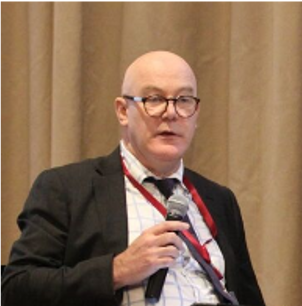
Dr Don Greenlees
Senior Advisor
Asialink
The University of Melbourne
Australia
Discussants:
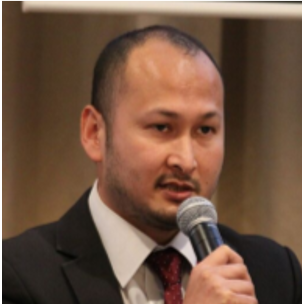
Mr Alizan Mahadi
Senior Fellow
Technology, Innovation, Environment and Sustainability (TIES)
Institute of Strategic and International Studies (ISIS)
Malaysia

Mr Stephen Harris
Special Representative
Commonwealth Clean Ocean Alliance (CCOA)
New Zealand
This session addressed the challenge of managing the environment in a developing Southeast Asia. The session opened with a review of the major environmental challenges identified by ASEAN in 2017 in its 5th state of the environment report. They include: worsening air quality, transboundary haze and rates greenhouse gases; depletion of agricultural land and forest resources; loss of biodiversity and ecosystems, declining water quality; damage to coasts, oceans and reefs, and excessive levels of production and consumption which leads to a growth in waste.
Rather than attempt to cover the full array of environmental challenges, the panel focused on some of them most pressing. The ongoing transboundary haze was a focal point of the discussion. Unfortunately, there is no compliance mechanism or legal platform through which Indonesia’s neighbouring countries can punish companies or individuals responsible for the slash-and-burn practice in Indonesia. ASEAN merely offers a space for consultation and negotiation among the involved parties. The absence of extra-territorial legal jurisdiction to bring actions against companies operating across borders is compounded by other problems in deterring burns off to make way for plantations.
As a region described as most vulnerable to climate change, Southeast Asia has not been spared from climate change-instigated natural disasters. It underscores the importance of building resilience to climate-related disasters both collectively within ASEAN and individually. This is an area where ASEAN can improve its collaboration.
Overconsumption of plastic was another major point in the session. Overconsumption of plastic was another major point in the session. The growing presence of plastic waste in the region, particularly following China’s National Sword Policy has raised issues particularly on the ability of Southeast Asian countries to manage this and other associated environmental concerns. The discussion sought ways on how expertise from ASEAN’s Dialogue Partners can contribute to address the issue, in addition to incorporating them further into regional architectures and mechanisms. Consumer and corporate behaviour is seen as an important ingredient in the solution – 40 percent of plastics are disposed of after use. Much of this plastic ends up in rivers.
Session 5: Evaluating Regional Architectures and Mechanisms
Moderator:
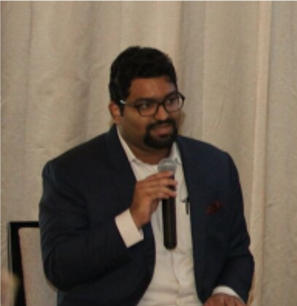
Mr Thomas Benjamin Daniel
Senior Analyst
Foreign Policy and Security Studies (FPSS)
Institute of Strategic and International Studies (ISIS)
Malaysia
Discussants:
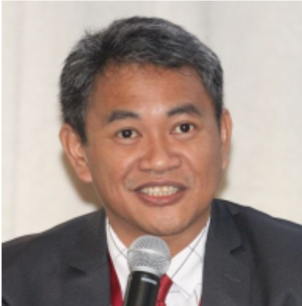
Professor Raymund Jose Quilop
Head
ASEAN Political Security Community (APSC)
Analysis and Monitoring Division
ASEAN Secretariat
Indonesia
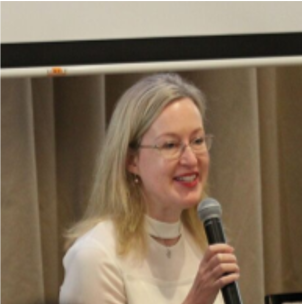
HE Ambassador Jane Duke
Australian Ambassador to ASEAN
Department of Foreign Affairs and Trade
Australia

Mr Stephen Harris
Special Representative
Commonwealth Clean Ocean Alliance (CCOA)
New Zealand
This session aimed to explore the effectiveness of ASEAN-led multilateral mechanisms such as the ASEAN Regional Forum (ARF) and East Asia Summit (EAS), and how they could address strategic issues at the regional level, with the emergence of the Indo-Pacific Concept and Belt and Road Initiative.. The session explored issues concerning key challenges facing such regional organisations and how ASEAN and its Dialogue Partners could address them.
Panellists highlighted a challenge for ASEAN and ASEAN-led institutions, such as the ARF and EAS, is that they are often judged as successful for otherwise based on their specific outputs, when they shouldn’t. The fact that ARF continues to focus on confidence-building is an indication of the scale of the task, not of institutional failure. The process of meeting was as important as the outcomes from the ARF. Perceptions of the ARF as a “mere talk shop” ignored the fundamental importance of these deliberations, and failed to recognise that the ARF, as the name conveys, was explicitly designed as a “forum”.
It was also pointed out that there are very few regional political platforms that bring together leaders to discuss political security agendas. The Kuala Lumpur Declaration signed in 2015 provided a vision for the EAS which encourages dialogues on thematic issues such as cybersecurity and cyber norms, non-proliferation and disarmament (NPD) as well as countering violent extremism (CVE), among others. Some participants argued that there are many opportunities in utilising the EAS in a more meaningful way and creating greater impact. Those included developing an EAS Chair Statement which was more reflective of the substance of Leaders discussions ii) moving from capacity building measures (CBM) setting to preventive diplomacy (PD) and iii) enhancing the broader communications strategy of the EAS to ensure visibility.
Some participants questioned whether ASEAN centrality was under threat with rising Chinese influence in some individual countries making it more difficult for ASEAN to act in a concerted way – for example on the South China Sea. Others argued that great power rivalry only strengthened the need for ASEAN centrality and ASEAN-led mechanisms in the region, Individual ASEAN countries were always going to have their own national and individual relationships with other players.
There was also a discussion on the effectiveness of ASEAN-led institutions in addressing regional environmental issues. ASEAN had been a proponent for a safer environment over the past decades, evidently, through ASEAN documents such as the Bangkok Declaration on Combating Marine Debris and ASEAN Action Plan. High-level gatherings such as EAS and ARF could be an opportunity for countries to discuss and address more comprehensively environment issues impacting the region.
Session 6: Perspectives on ASEAN-Australia-New Zealand Cooperation and Challenges
Moderator:
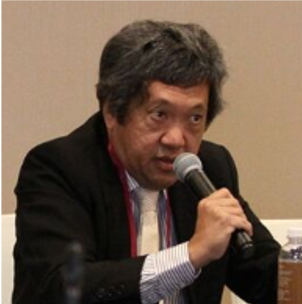
Mr Bunn Nagara
Senior Fellow
Institute of Strategic and International Studies (ISIS)
Malaysia
Discussants:
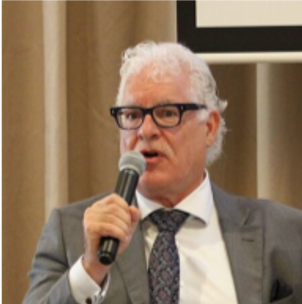
Mr John Goodlad
President of the WA Branch
Australian Institute of International Affairs (AIIA)
Australia
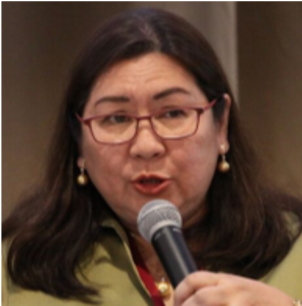
Professor Aileen SP Baviera
Chair, ASEAN-ISIS Network;
President, Asia Pacific Pathways to Progress Foundation (APPFI)
The Philippines

Mr Simon Draper
Executive Director
Asia New Zealand Foundation (ANZF)
New Zealand
The concluding session discussed the issues and overarching themes that emerged throughout the 2019 AANZ Dialogue. Also discussed were suggestions for the way forward and recommendations for the 2020 AANZ Dialogue.
Some panellists and participants argued that while the sessions covered many areas, the sessions did not elaborate on more specific topics such as those concerning Malaysia Baharu, South China Sea and the Rohingya. Issues such as the impact of an aging society were also not raised in this year’s Dialogue, along with the role of non-state actors in great power interaction.
Overarching themes raised in the session were the impact of growing strategic and economic uncertainty in the region on both individual countries and regional institutions. The climate crisis was also a key focus. It was underlined that ASEAN Member States, Australia and New Zealand did not want big powers to make decisions on their behalf. At the same time, these countries also need to accommodate China as a different power. To play a central role, each ASEAN country would have to place ASEAN at the center of their decision-making – something that was not consistent across all Member States.
One panellist asserted that the Pacific Islands Forum was a good example of a grouping influencing decisions on China. Conversations in the session also focused on the Mekong where the interests of nations were often at odds with each other, and the pollution of plastics is rampant. Cooperation between nations to clean-up plastic should not be controversial.
A few recommendations were raised in the panel. The first was to strengthen the ASEAN Secretariat and encourage the ASEAN Secretariat to find better ways to engage the media such as educational sessions on the South China Sea. The second was for ASEAN to review the concept of consensus, particularly for concerns in the Mekong region. Third, to address the trade war and major power competition, Track 2 stakeholders from ASEAN, Australia and New Zealand should urge their governments to underscore their opposition to protectionism and the call for the end of trade wars. Fourthly, the panel recommended that future dialogues should consider widening the pool of participants to other nations such as Japan and India who share similar concerns and hope for frank discussions. Lastly, it was proposed for the organisers to invite the private sector to participate in future AANZ Dialogue such as Khazanah. Future AANZ Dialogue should also aim for deeper representation from other ASEAN countries.
d. NextGen Component
Participants of the NextGen activity programme as well as panellists of the Track 2 simulation.
The NextGen component was implemented again this year following its establishment at last year’s AANZ Dialogue. It offers a platform for younger delegates and researchers from Southeast Asia, Australia and New Zealand to network and discuss issues highlighted at the Dialogue.
This year’s NextGen component kicked-off with a Welcome Lunch for all participants on 22 September 2019. Lunch was followed by a half-day programme comprising two sessions: (1) an introduction to Track 2 process and (2) a Track 2 simulation titled “Digitalisation and How It Impacts Security, Economic, Social and Environmental Policy”.
The first session provided an introduction to Track 2 dialogues to the participants, highlighting the nature, context and purpose of these sessions. One notable area of discussion was the matter of terminology and framing of concepts and institutions, particularly one from the understanding from the participants on what constituted the regional architecture and what is expected of them. It highlighted the importance of the AANZ Dialogues in gaining access to official and non-official stakeholders, their participation as well as their feedback.
Dr James To (ANZF) moderated the Track 2 simulation. Panellists included Dr Juita Mohamad (ISIS Malaysia), Mr Isa Seow (Auckland University) and Ms Jasmine Valcic (New Colombo Plan Scholar, Bond University). This session discussed the disruptive impacts digitalisation can pose on national policies and their broader implications to the ASEAN and its Dialogue Partners. A focus on the positive impact of digitalisation in spurring the informal sector in Malaysia and the argument for and against stricter regulation on informal sector kicked off the conversation. Further discussions touched upon ways to manage youth unemployment and the readiness of the developing states to adopt data privacy and the digital (online) marketplace.
Another important discussion focused on the increasing prevalence of social media and whether it needs more regulation. Examples of extremist ideology from religious extremism to right-winged ideology were been raised as being troubling areas given instances such as the Christchurch attack. This also deals with the question about the issue regarding the data collected from such social media. This that it is a reflection of business ethics as most companies now collect data but without any specific reason, which then requires reporting requirements.